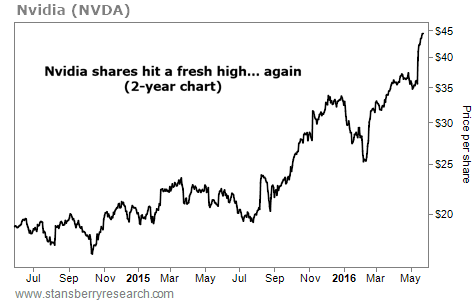| Home | About Us | Resources | Archive | Free Reports | Market Window |
To Become an Elite Investor, You Must Master This SkillBy
Wednesday, May 25, 2016
"How many piano tuners are there in Chicago?"
We've come a long way since Nobel laureate Enrico Fermi first posed this question to his physics classes at the University of Chicago's Institute for Nuclear Studies (now named the Enrico Fermi Institute).
Thanks to the Internet, I suspect many of you already have an answer. I found one in less than a minute – it turns out, there are 56.
Back in the late 1940s, Professor Fermi's students weren't so lucky. Even the Yellow Pages were still a couple of decades away from mass production.
So how do you develop a credible answer to a seemingly impossible question? Today, I'll explain how he did it... and show you how this ability helps you as an investor...
Professor Fermi was prompting his students to take the only plausible approach: break the "impossible" question down into smaller pieces or questions you can answer. Then, assemble the pieces back together to solve the original (seemingly impossible) problem.
Author Phil Tetlock provides an excellent illustration of how he'd approach an answer – without relying on external sources – in his book, Superforecasters – The Art and Science of Prediction.
First, Tetlock estimated there were around 2.5 million people living in Chicago. Second, he guessed only about 2% of the population (50,000) even owned a piano. Third, he estimated that pianos need to be tuned once a year – which, he figured, would take about two hours. Lastly, Tetlock estimated that a piano tuner would work the usual 40 hours a week (about 1,600 hours per year, taking into account driving time.)
Now, Tetlock had enough data to produce an answer. If there are 50,000 pianos in Chicago, that's 100,000 piano-tuning hours of work. If the typical piano technician works 1,600 hours per year, that means there must be about 63 piano tuners in Chicago (100,000 / 1,600).
Earlier, I mentioned I'd found the answer to be 56. So Tetlock's "Fermi-izing" got him incredibly close to the actual number – even though it was nothing more than five layers of educated guesses.
Similarly, a big part of our job as investors is imagining how investment theses we've previously formed might change in the future. Nothing about this is easy.
For instance, back in February, we advised our Extreme Value subscribers to lock in gains on their successful investment in insurance company Lancashire Holdings (LRE.L). Although we thought highly of the business, the release of fiscal fourth-quarter results altered our view of how the story was changing relative to our original investment thesis.
Briefly, gross insurance premiums in the energy sector had declined a hefty 53% compared with the previous year. With oil prices below $50, Lancashire's energy clients were doing whatever they could to preserve capital – even if that meant buying less insurance.
The problem for Lancashire: This particular type of insurance was very profitable and fueled a large annual special dividend. Now that it was unlikely to come back any time soon, we concluded net cash from operations for the year likely wouldn't be enough to pay a substantial special dividend – something that investors had gotten used to, and that represented a significant source of their total returns.
In short, arriving at answers to seemingly simple questions – is Lancashire likely to pay a special dividend this year, and should we continue to hold? – required us to consider several interrelated issues separately. That way, we could assemble our conclusions back into a final answer: No, LRE was unlikely to have the financial means to pay a special dividend, and no, we should not continue to hold. We closed out of Lancashire for a 34% gain in around 18 months.
As you confront difficult challenges in your analytical work as an investor, remember, even the most puzzling questions often become "solvable" when divided into pieces you can grasp.
As this becomes second nature, you'll find yourself in elite territory among your fellow investors.
Regards,
Mike Barrett
Further Reading:
"Anybody can improve their forecasting (and investing) skills if they desire to do so," Mike writes. Read his review of Tetlock's excellent book here: How to Become a 'Superforecaster.'
Earlier this year, Mike shared a list of the things he and his colleagues always find time to read. Get the full list here: These 13 'Must-Read' Resources Will Make You a Better Investor.
Market NotesTHIS VIRTUAL-REALITY STOCK SCREAMS HIGHER Virtual reality is hot... and one of the industry's "picks and shovels" businesses is soaring.
Regular DailyWealth readers are familiar with "picks and shovels." These companies don't bet it all on one project. Instead, they sell vital goods and services to an entire industry. Take Nvidia (NVDA), for example...
Nvidia's semiconductors are found in everything from Honda cars to IBM's high-end cloud servers. But it's mainly considered a leader in the graphics industry. (NASA recently chose the company to help create a virtual-reality system that replicates the Mars landscape.) That makes Nvidia shares a great gauge of growth and optimism in the sector.
As you can see, virtual reality is booming. Two weeks ago, Nvidia announced blowout earnings, pushing shares nearly 30% higher in just the last eight trading days. Overall, Nvidia is up about 220% over the past three years. The trend in virtual reality is up... for now.
 |
Recent Articles
|



